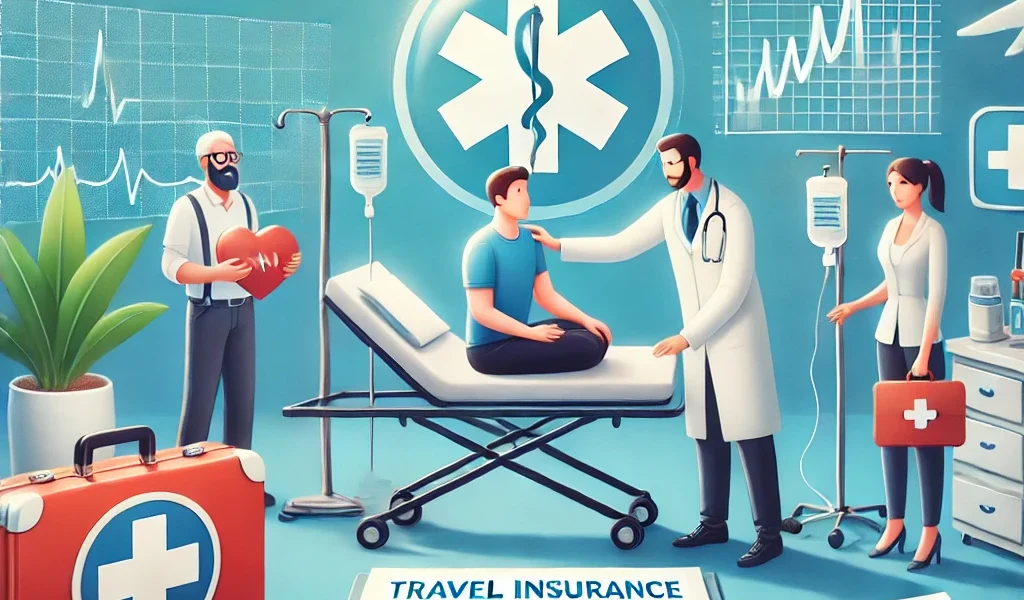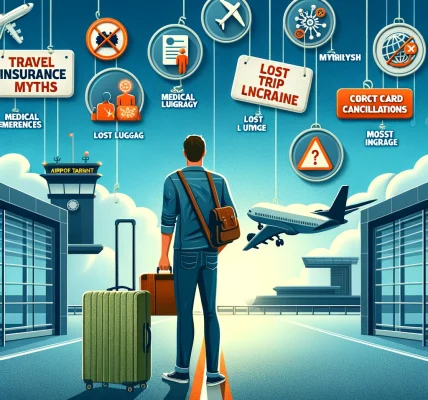Introduction
Traveling to a foreign country is exciting, but what happens if you fall sick or get injured abroad? Medical treatment in another country can be expensive, and without travel insurance, you could end up paying thousands of dollars out of pocket.
A good travel medical insurance policy ensures you get the best healthcare without financial stress. In this DIY guide, we’ll cover:
✅ What medical travel insurance covers
✅ How much emergency treatment abroad can cost
✅ Step-by-step guide to filing a claim
✅ Common mistakes that lead to claim denials
By the end, you’ll know exactly how to protect yourself financially in case of a medical emergency abroad.
Why Medical Travel Insurance is a Must-Have
Many travelers assume their domestic health insurance covers them worldwide. However, most standard health plans do not cover international medical expenses.
Here’s why medical travel insurance is essential:
✔ Covers emergency medical treatment – Hospital stays, surgeries, ambulance fees, and doctor consultations
✔ Pays for medical evacuation – If you need to be airlifted back home for advanced care
✔ Provides cashless hospital admission – So you don’t have to pay large sums upfront
✔ Covers trip cancellations due to illness – If you get sick before departure
✔ Gives 24/7 emergency assistance – Help with finding hospitals and translators
How Much Can Medical Emergencies Cost Abroad?
Without travel insurance, medical treatment abroad can be extremely expensive. Here are some real examples:
🌍 USA: $15,000 – $100,000 for emergency hospitalization
🌍 Europe: $5,000 – $20,000 for a broken leg treatment
🌍 Japan: $3,000 – $10,000 for emergency surgery
🌍 Thailand: $1,500 – $3,000 for food poisoning treatment
🌍 Australia: $10,000+ for a medical evacuation to another country
💡 Did You Know?
Medical evacuation from a remote location can cost over $200,000! Without travel insurance, this cost falls entirely on you.
What Does Travel Medical Insurance Cover?
✅ 1. Emergency Medical Expenses
- Hospitalization, doctor consultations, and treatment
- Prescription medications
- Emergency surgeries
✅ 2. Medical Evacuation & Repatriation
- If local hospitals can’t provide adequate treatment, you’ll be flown to the nearest qualified facility
- If necessary, you’ll be transported back to your home country for further treatment
✅ 3. Accidental Injuries
- Injuries from slips, falls, or minor accidents
- Coverage for emergency dental treatment
✅ 4. COVID-19 & Infectious Diseases (Varies by policy)
- Covers quarantine costs, treatment, and hospitalization if you get sick with COVID-19 or other infectious diseases
✅ 5. 24/7 Emergency Assistance Services
- Help with finding hospitals, arranging medical transport, and translating medical documents
💡 Tip: Always read the policy wording to understand the exact coverage limits.
What is NOT Covered by Travel Medical Insurance?
❌ Pre-existing medical conditions (unless specifically covered)
❌ Elective surgeries and cosmetic procedures
❌ High-risk activities (like extreme sports) unless added
❌ Routine checkups or preventive care
❌ Injuries due to alcohol or drug use
💡 Tip: If you have a pre-existing condition, check if your insurer offers a waiver for pre-existing conditions.
How to Choose the Best Travel Medical Insurance Plan
Not all travel insurance policies offer the same level of medical coverage. Here’s how to choose the right one:
✅ 1. Check the Medical Coverage Limit
Look for plans that offer at least $100,000 in medical coverage. Some destinations (like the U.S.) may require $500,000+ coverage due to high medical costs.
✅ 2. Ensure Medical Evacuation is Included
Evacuation and repatriation should be covered up to $250,000, especially if you’re traveling to remote areas.
✅ 3. Read the Fine Print on Pre-Existing Conditions
If you have a pre-existing condition, look for policies that offer coverage with a waiver.
✅ 4. Choose a Plan with Direct Hospital Billing
This prevents you from paying out-of-pocket and waiting for reimbursement later.
✅ 5. 24/7 Customer Support is a Must
Make sure the insurer offers 24/7 emergency assistance for help with medical claims abroad.
How to File a Travel Medical Insurance Claim
Step 1: Seek Medical Help Immediately
- Visit the nearest hospital or clinic
- Keep all hospital bills, receipts, and prescriptions
Step 2: Contact Your Travel Insurance Provider
- Call your insurer’s emergency assistance hotline
- Ask if the hospital is within their network for direct billing
Step 3: Submit Your Claim with Supporting Documents
- Medical reports from the doctor
- Receipts for medical expenses
- Proof of travel (boarding pass, passport stamp, etc.)
Step 4: Follow Up
- Some claims take 1-4 weeks for processing
- If your claim is denied, ask for a written explanation and file an appeal if necessary
💡 Tip: Always carry a copy of your travel insurance policy and emergency contact numbers while traveling.
Common Mistakes That Can Lead to Claim Denials
🚫 Not informing your insurer before seeking treatment – Always call your insurer before receiving medical care (except in life-threatening emergencies).
🚫 Failing to provide medical records – Without proper documentation, your claim could be rejected.
🚫 Getting treatment from an unauthorized provider – Some insurers only cover treatment at network hospitals.
🚫 Not disclosing pre-existing conditions – If you don’t declare a pre-existing condition, your claim may be denied.
🚫 Alcohol or drug-related injuries – Most policies do not cover medical treatment for injuries caused by alcohol or drug use.
💡 Tip: Read your policy’s exclusions section carefully before traveling.
Final Thoughts: Is Travel Medical Insurance Worth It?
Absolutely! Travel medical insurance provides:
✔ Financial protection against unexpected medical bills
✔ Peace of mind knowing you’re covered in emergencies
✔ Access to quality healthcare without worrying about costs
To stay safe, always:
✅ Choose a policy with high medical coverage
✅ Carry copies of your insurance documents
✅ Keep emergency contacts handy




